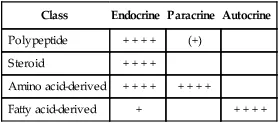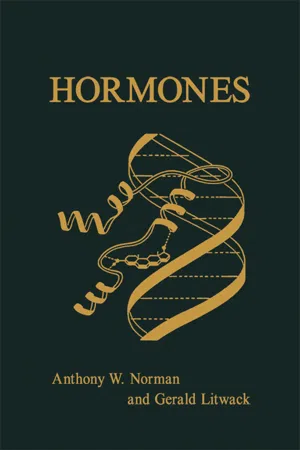
- 822 pages
- English
- ePUB (mobile friendly)
- Available on iOS & Android
Hormones
About this book
Hormones provides a comprehensive treatment of human hormones viewed in the light of modern theories of hormone action and in the context of current understanding of subcellular and cellular architecture and classical organ physiology. The book begins with discussions of the first principles of hormone action and the seven classes of steroid hormones and their chemistry, biosynthesis, and metabolism. These are followed by separate chapters that address either a classical endocrine system, e.g., hypothalamic hormones, posterior pituitary hormones, anterior pituitary hormones, thyroid hormones, pancreatic hormones, gastrointestinal hormones, calcium regulating hormones, adrenal corticoids, hormones of the adrenal medulla, androgens, estrogens and progestins, and pregnancy and lactation hormones; or newer domains of hormone action which are essential to a comprehensive understanding of hormone action, including prostaglandins, thymus hormones, and pineal hormones. The book concludes with a presentation of hormones of the future, i.e., cell growth factors. This book is intended for use by first-year medical students, graduate students, and advanced undergraduates in the biological sciences. It is also hoped that this book will fill the void that exists for resource materials for teaching cellular and molecular endocrinology and that it will be employed as an equal partner with most standard biochemistry textbooks to provide a comprehensive and balanced coverage of this realm of biology.
Frequently asked questions
- Essential is ideal for learners and professionals who enjoy exploring a wide range of subjects. Access the Essential Library with 800,000+ trusted titles and best-sellers across business, personal growth, and the humanities. Includes unlimited reading time and Standard Read Aloud voice.
- Complete: Perfect for advanced learners and researchers needing full, unrestricted access. Unlock 1.4M+ books across hundreds of subjects, including academic and specialized titles. The Complete Plan also includes advanced features like Premium Read Aloud and Research Assistant.
Please note we cannot support devices running on iOS 13 and Android 7 or earlier. Learn more about using the app.
Information
General Considerations of Hormones
Publisher Summary
I CLASSIFICATION OF HORMONES
A Introduction
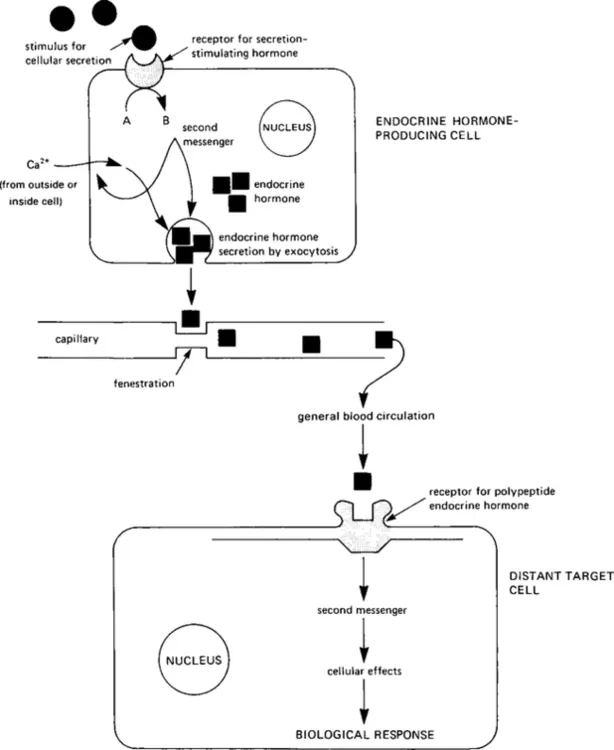
| Class | Endocrine | Paracrine | Autocrine |
| Polypeptide | + + + + | (+) | |
| Steroid | + + + + | ||
| Amino acid-derived | + + + + | + + + + | |
| Fatty acid-derived | + | + + + + |

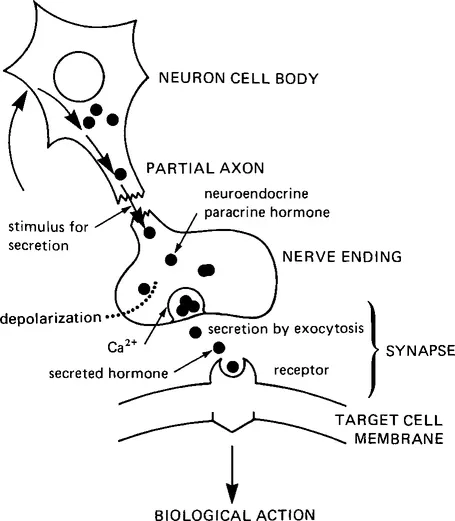
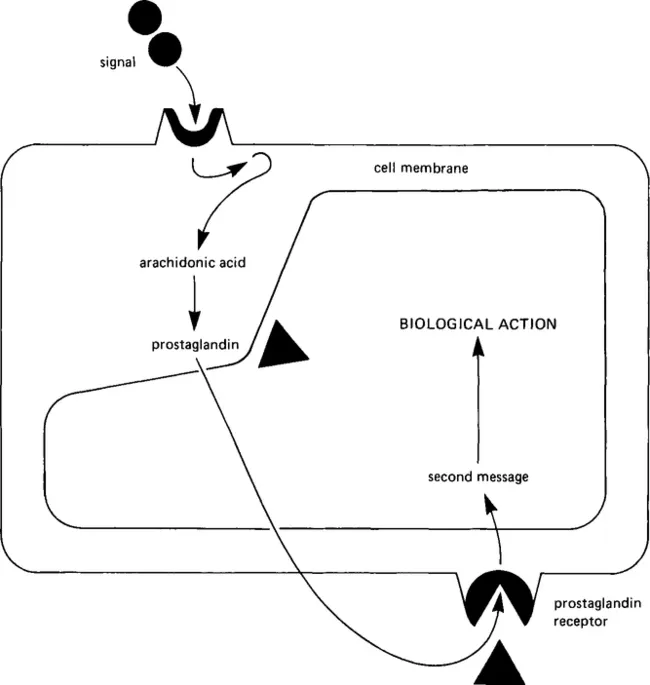
Table of contents
- Cover image
- Title page
- Table of Contents
- Copyright
- Preface
- Chapter 1: General Considerations of Hormones
- Chapter 2: Steroid Hormones: Chemistry, Biosynthesis, and Metabolism
- Chapter 3: Hypothalamic Regulating Hormones
- Chapter 4: Posterior Pituitary Hormones
- Chapter 5: Anterior Pituitary Hormones
- Chapter 6: Thyroid Hormones
- Chapter 7: Pancreatic Hormones: Insulin and Glucagon
- Chapter 8: Gastrointestinal Hormones
- Chapter 9: The Calcium-Regulating Hormones: Vitamin D, Parathyroid Hormone, Calcitonin
- Chapter 10: Adrenal Corticoids
- Chapter 11: Hormones of the Adrenal Medulla
- Chapter 12: Androgens
- Chapter 13: Estrogens and Progestins
- Chapter 14: Hormones of Pregnancy and Lactation
- Chapter 15: Hormones of the Kidney
- Chapter 16: Prostaglandins
- Chapter 17: Thymus Hormones
- Chapter 18: Pineal Hormones
- Chapter 19: Cell Growth Factors
- Appendix A
- Appendix B
- Appendix C
- Appendix D
- Appendix E
- Appendix F
- Appendix G
- Appendix H
- Index
